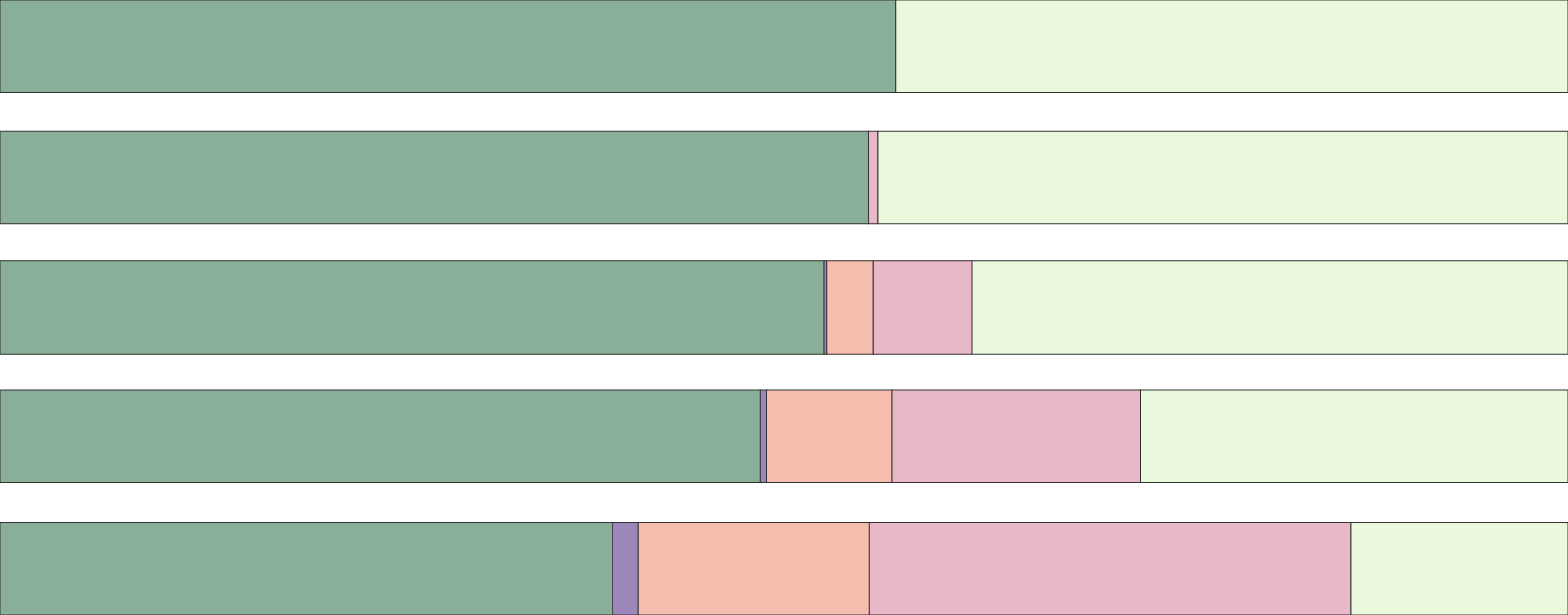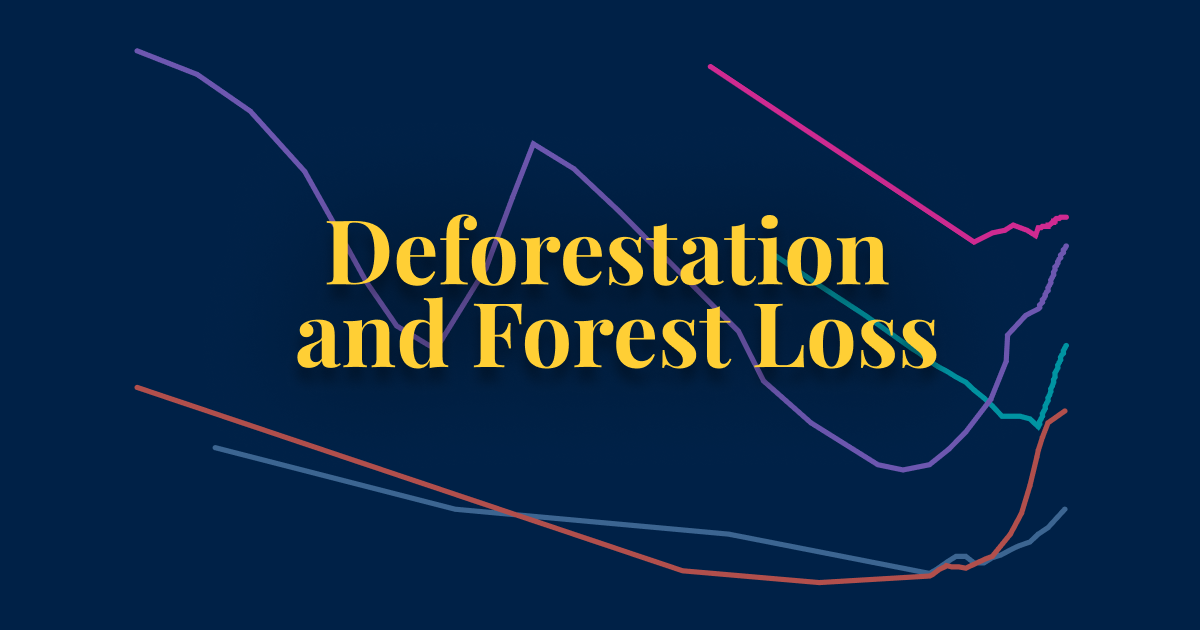Forests and Deforestation
Humans have been cutting down forests for millennia. The world has lost one-third of its forests since the end of the last ice age – 10,000 years ago. Half of this loss occurred in the last century alone.
The main driver of deforestation is agriculture: humans clear forest to make space for grazing and croplands.
Global deforestation rates are still very high. Most of it occurs in the tropics where primary forests are rich in biodiversity. But rates have also passed their peak: deforestation has reversed in many countries across temperate regions, and rates have slowed in many countries across the tropics.
Finally bringing deforestation to an end is essential to protect the world’s biodiversity, and to tackle climate change.
On this page, you can find all of our data on forests and deforestation.
Research & Writing

Global deforestation peaked in the 1980s. Can we bring it to an end?
There was a marked acceleration in deforestation in the 20th century. But, global deforestation peaked in the 1980s. Since then, it has slowed.

The world has lost one-third of its forest, but an end of deforestation is possible
Over the last 10,000 years the world has lost one-third of its forests. An area twice the size of the United States. Half occurred in the last century.

Cutting down forests: what are the drivers of deforestation?
Three-quarters of deforestation is driven by agriculture. Most comes from the production of beef, palm oil, soy and logging industries.
Overview pages on Forests and Deforestation
More Articles on Forests and Deforestation

Do rich countries import deforestation from overseas?

Is our appetite for soy driving deforestation in the Amazon?

Palm Oil

Carbon emissions from deforestation: are they driven by domestic demand or international trade?

Not all forest loss is equal: what is the difference between deforestation and forest degradation?

Humans destroyed forests for thousands of years – we can become the first generation that achieves a world in which forests expand
Cite this work
Our articles and data visualizations rely on work from many different people and organizations. When citing this topic page, please also cite the underlying data sources. This topic page can be cited as:
Hannah Ritchie, Fiona Spooner and Max Roser (2021) - “Forests and Deforestation” Published online at OurWorldInData.org. Retrieved from: 'https://ourworldindata.org/forests-and-deforestation' [Online Resource]BibTeX citation
@article{owid-forests-and-deforestation,
author = {Hannah Ritchie and Fiona Spooner and Max Roser},
title = {Forests and Deforestation},
journal = {Our World in Data},
year = {2021},
note = {https://ourworldindata.org/forests-and-deforestation}
}Reuse this work freely
All visualizations, data, and code produced by Our World in Data are completely open access under the Creative Commons BY license. You have the permission to use, distribute, and reproduce these in any medium, provided the source and authors are credited.
The data produced by third parties and made available by Our World in Data is subject to the license terms from the original third-party authors. We will always indicate the original source of the data in our documentation, so you should always check the license of any such third-party data before use and redistribution.
All of our charts can be embedded in any site.









































